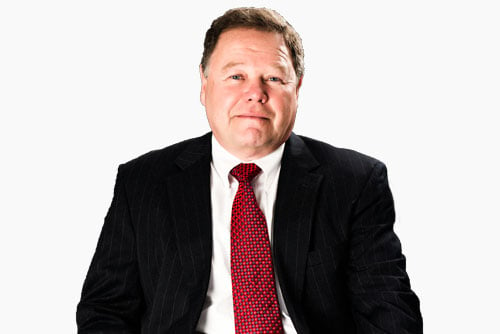

The expansion of railroad systems in the 19th century is often credited as a key factor that drove industrialisation and the opening up of new markets. Today, railroads continue to play an important role in the transportation of goods and people, though they haven’t escaped the risks that face many other businesses in the transportation sector and beyond.
One of the more recent developments that’s been gaining speed, and is now coming to a crucial junction because of a train collision between a Union Pacific freight train and a Metrolink commuter train in Los Angeles in 2008, is the implementation of positive train control.
“Positive train control is a GPS-based system that, if it works properly, will prevent head-on collisions and will slow a train automatically if the engineer is moving the train at higher speeds than they should in certain areas,” said David Adamczyk (pictured), global head of railroad at Aspen Insurance, which concentrates on Class II and Class III railroads, otherwise known as the regional and shortline railroads that act as the feeder lines into the largest Class I railroads. Nonetheless, railroads across the board face similar risks, such as the commodity mix.
“There’s less emphasis on coal, for example, and from an insurance standpoint, we prefer to insure railroads that move coal because if you have a derailment and it falls to the ground, it’s easy to scoop up and put right back into the cars, so there’s not much environmental damage,” said Adamczyk. “The concern we have is the fastest growing commodity for railroads is chemicals, and that creates a much higher exposure than moving coal. That’s where you’re getting into the large, what we like to call ‘front page news’ derailments and accidents, where a location might be evacuated or the area has significant environmental damage.”
With railroads in all classes relying on dispatch and signal systems, the threat of cyber is also on the radar. Adamczyk predicts that there will soon come a time when all railroads will need to purchase their own cyber liability insurance.
“If there was a cyberattack in a railroad’s dispatching process, for instance, it could cause a derailment, it could cause a delay in shipping times, and it could also create lost commodities. So much of that is tracked by technology and if something was to happen to the system, it could create many problems,” he said.
Competition with the trucking industry as fuel prices fluctuate, the dwindling number of millennials choosing a career in the rail industry, and reregulation of the sector that has spurred the growth of shortline and regional railroads are other top priority issues for these transportation systems and their insurance providers. In some cases, railroad infrastructure also faces physical hazards when tracks are exposed to the effects of weather events.
“Railroads are one of the most capital intensive industries out there. Unlike trucks that operate on public roads, railroads run on their own railroad tracks and they are responsible for maintaining that track. Depending on where that train operates, infrastructure costs can be much higher than other railroads due to situations of extreme temperatures or flooding areas,” said Adamczyk. “We see more situations where 100-year floods occur every five years, and track is laid alongside bodies of water quite a bit – rivers, creeks, and lakes – and once that water covers the infrastructure, track lays on ballast and that ballast gets washed away, so there’s nothing to hold that track into place.”
In other climate news, regions that previously didn’t experience extreme temperatures are seeing mercury rise, which presents a threat for railroads that in turn fall victim to sun kinks, or the buckling of track.
As the perils facing railroads mount, companies are putting more emphasis on safety and new technology, while allocating more funds and energy to strengthening infrastructure.
Meanwhile, the railroad insurance market is experiencing its own evolution. Adamczyk started his career in railroad insurance back in 1983, and has seen the marketplace for these accounts contract in the past few years.
“More and more railroads are being acquired by the holding companies out there. Whereas when I started my career, there were many more independently-owned railroads, over time holding companies were created and they started to purchase these other railroads,” he said. “With that, there are fewer and fewer risks out there for insurance companies to cover, therefore reducing the premium base that is out there. Given that this is such a potentially volatile industry, it has kept the markets stable throughout because there are only so many markets that could survive underwriting shortline and regional railroads.”
